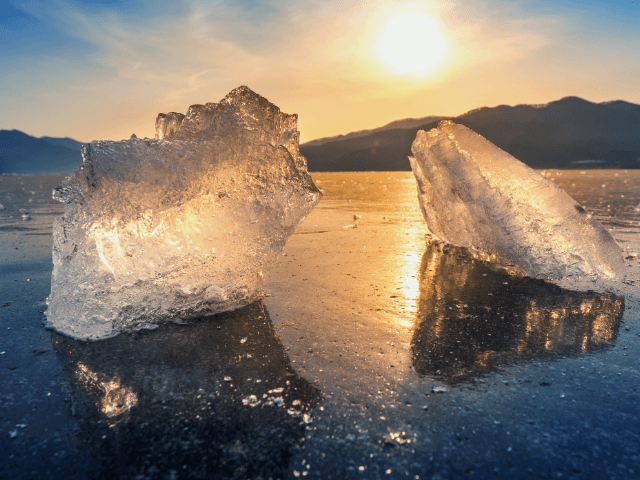
Dr Will Hobbs
Questions answered by this expert
That’s a great question, and the simple answer is ‘yes’, melting ice definitely makes the ocean less salty (or fresher, as we oceanographers say). What that means for the ocean depends on what type of ice melts, and where it melts, but the most important thing to understand is that salty water is heavier and will tend to sink, but fresh water is lighter and will tend to stay at the surface. This matters because sinking ocean water takes heat and carbon from the atmosphere to the deep ocean, and reduces the amount of climate change that we all deal with. So, by freshening the ocean surface and making it lighter, melting ice makes it difficult for the ocean to reduce the impacts of climate change.
In polar regions the biggest source of freshening by far is sea ice; this is frozen sea water that makes the ocean salty when it freezes, but fresher when it melts. Just in the Antarctic, an area of ocean two and half times the size of Australia freezes over in autumn and then melts in spring – every single year. This natural freshening/salting process helps to mix a lot of water between the surface and the deep ocean, and is very important both for our climate and for the marine life near Antarctica.

Another source of freshening, that is smaller than sea ice but getting bigger all the time, is melt water from the Antarctic ice sheets – this is ice on land that has formed from thousands of years of snowfall. As that ice melts into the ocean it causes the sea level to rise up, but it also freshens the surface and reduces that up-down pump of sea water. Scientists are still working to fully understand how this will affect the climate – it’s a new and fascinating part of my research.
There are 2 polar icecaps, Antarctica and Greenland, and if all the ice they held was melted into the ocean then the sea level would rise more than 60m, enough to cover most of Hobart. Don’t worry though. Even if that were to happen (and no serious scientist thinks it will), it would take hundreds of years for all of that ice to melt.

A much harder question to answer is how much of the polar icecaps are likely to melt, and what will happen then? Since 2006 global sea level has risen about 48 mm, about 22% from Greenland melt and 13% from Antarctica. Although Greenland is melting faster at the moment, there is much more ice in Antarctica, and in fact understanding how much Antarctic ice will melt in the future is one of the biggest questions in climate science. As well as increasing the size of the ocean, adding all that fresh (non-salty) water may change the way that the ocean
currents move water between the surface and deep ocean, which could impact sea life and the rest of the climate.
Scientists are working hard to better understand how the icecap will change in the future, both by visiting Antarctica to take measurements, and by building better computer models. In the meantime, it’s important that we take action to limit warming in Antarctica as much as possible.









